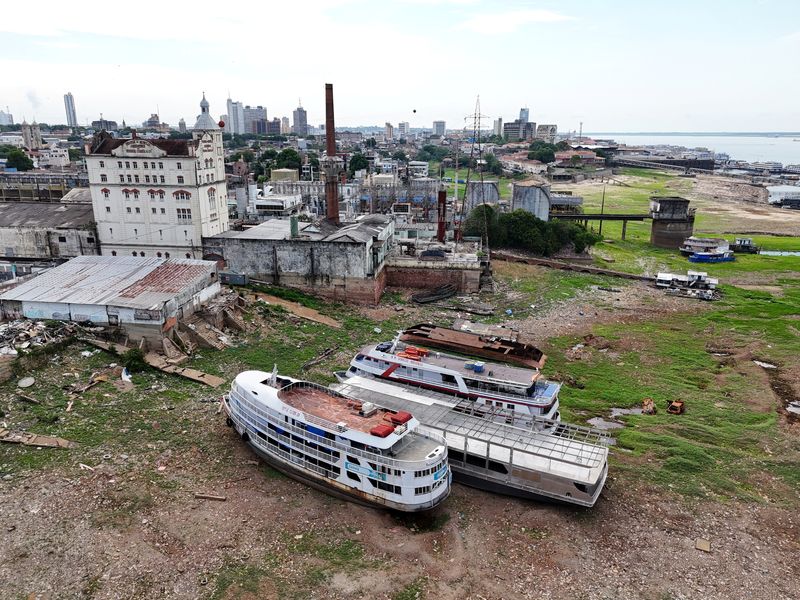By Bruno Kelly and Jake Spring
MANAUS, Brazil (Reuters) -The river port in the Amazon (NASDAQ:) rainforest’s largest city of Manaus on Friday hit its lowest level since 1902, as a drought drains waterways and snarls transport of grain exports and essential supplies that are the region’s lifeline.
Below-average rainfall – even through the rainy season – has plagued the Amazon and much of South America since last year, also feeding the worst wildfires in more than a decade in Brazil and Bolivia. Researchers say climate change is the main culprit.
Scientists predict the Amazon region may not fully recover moisture levels until 2026.
Last year, the drought became a humanitarian crisis, as people reliant on rivers were stranded without food, water or medicine.
This year authorities are already on alert. In hard-hit Amazonas state, at least 62 municipalities are under states of emergency with more than half a million people affected, according to the state’s civil defense corps.
“This is now the most severe drought in over 120 years of measurement at the Port of Manaus,” said Valmir Mendonca, the port’s head of operations, who said the river level is likely to keep falling for another week or two.
With the region never fully recovering due to weaker-than-usual seasonal rains, many of the impacts of the drought last year look set to repeat or reach new extremes.
The Port of Manaus measured the Rio Negro river at 12.66 meters on Friday, according to its website, surpassing the previous all-time low recorded last year and still falling rapidly.
The Rio Negro is a major tributary of the Amazon River, the world’s largest river by volume. The port sits near the “meeting of the waters” where the black water of the Negro meets the sandy-colored Solimoes, which also hit a record low this week.
Grain shipments have been halted on the Madeira River, another tributary of the Amazon, because of low water levels, a port association said last month.
Researchers are once again finding the carcasses of Amazon freshwater river dolphins, which they blame on thinning waters driving the threatened species into closer contact with humans.
National disaster monitoring agency Cemaden has already called the drought Brazil’s worst such event since at least the 1950s.
The drought has also sapped hydropower plants, Brazil’s main source of electricity. Energy authorities have approved bringing back daylight saving time to conserve electricity, although the measure still requires presidential approval.

The extreme weather and dryness is affecting much of South America, with the Paraguay River also at an all-time low. That river starts in Brazil and flows through Paraguay and Argentina to the Atlantic.
The same extreme heat and dryness is helping drive surging fires in the Amazon and neighboring Pantanal, the world’s largest wetlands. Bolivia is also on track to break a record for most fires ever recorded, according to data from Brazil’s space research agency.

